If you have read recent articles on how Screen Printing works you will be aware of how complicated the process is, but preparing your artwork for screen printing doesn’t have to be difficult and certainly doesn’t have to absorb a lot of your time. To avoid spending hours creating a design only to find out it doesn’t quite have the desired effect when printed is something that can be easily done if you clue yourself up beforehand.
This blog will give you the basic information you need to correctly prepare your artwork for screen printing to prevent any nasty surprises and wasted artwork.

1. Aim To Use No More Than 6 Colours
Looking at examples of screen printed products e.g stickers, decals or even advertising boards, you will see that many of them use fewer than 6 colours and certainly fewer than 10. It is also important to consider that while gradient colours can be achieved they are often incredibly difficult to produce through screen printing. There are 2 reasons for these points:
a. Each individual colour requires a separate screen to be created that corresponds to that colour and the shape within the design. The more colours in the design, the more complex the set up required. There is also a higher likelihood that there could be registration issues. This can make photography within screen printing difficult as often, a photograph can’t be separated into separate colours and can very rarely be separated in to as few as 6 colours which is why we would never recommend screen printing as a process if you are looking to print photography.
b. Screen printing lends itself incredibly well to printing block colours, which typically requires fewer colours in a larger quantities to achieve the desired effect. Logos and block text are the ideal type of task screen printing excels at, producing highly effective results.
You should also aim to separate each colour into its own layer, and ensure all text graphics are outlined for a crisp and clean finish at the end. These little differences really do make a significant difference and shouldn’t be overlooked.
2. Save two Copies: 1 for print and 1 for You
It’s always best to be safe when saving down your final artwork and we would always recommend saving two copies:
- Final artwork file to send over to the printer (usually un-editable)
- A spare editable copy that you can refer back to in the case there are any issues with the original artwork and things need changing.
The worst-case scenario is that you have saved down/flatted your single design only to realise you need to make edits, meaning you need to recreate parts of the artwork - or even worse start from scratch!
3. Size Your Design
When preparing your designs for screen printing, it is important that any artwork is sized exactly to the dimensions you would like to print in - and this means the size of the actual design, and not just the background of the design file. For example, if you wanted to print a 10” x 20” design, you would need to make sure your artwork file is 10” x 20” for accuracy. It is also always best to have artwork saved as 300 DPI (dots per inch).
Ensuring you have your artwork saved in the correct resolution and to the correct size is a crucial step and will help avoid any inaccuracies or unexpected issues when sending your design off to print. It is also best to check with your print provider what sizing and resolution they require before sending artwork over to ensure you get it right the first time.
Your Screen Printing Needs Covered
Evans Graphics are one of the few print providers within the UK that still supply screen printing. Our expertise, technology and quick turnaround time mean we are well equipped to ensure your project is delivered to a high standard, on time and with the best results.



